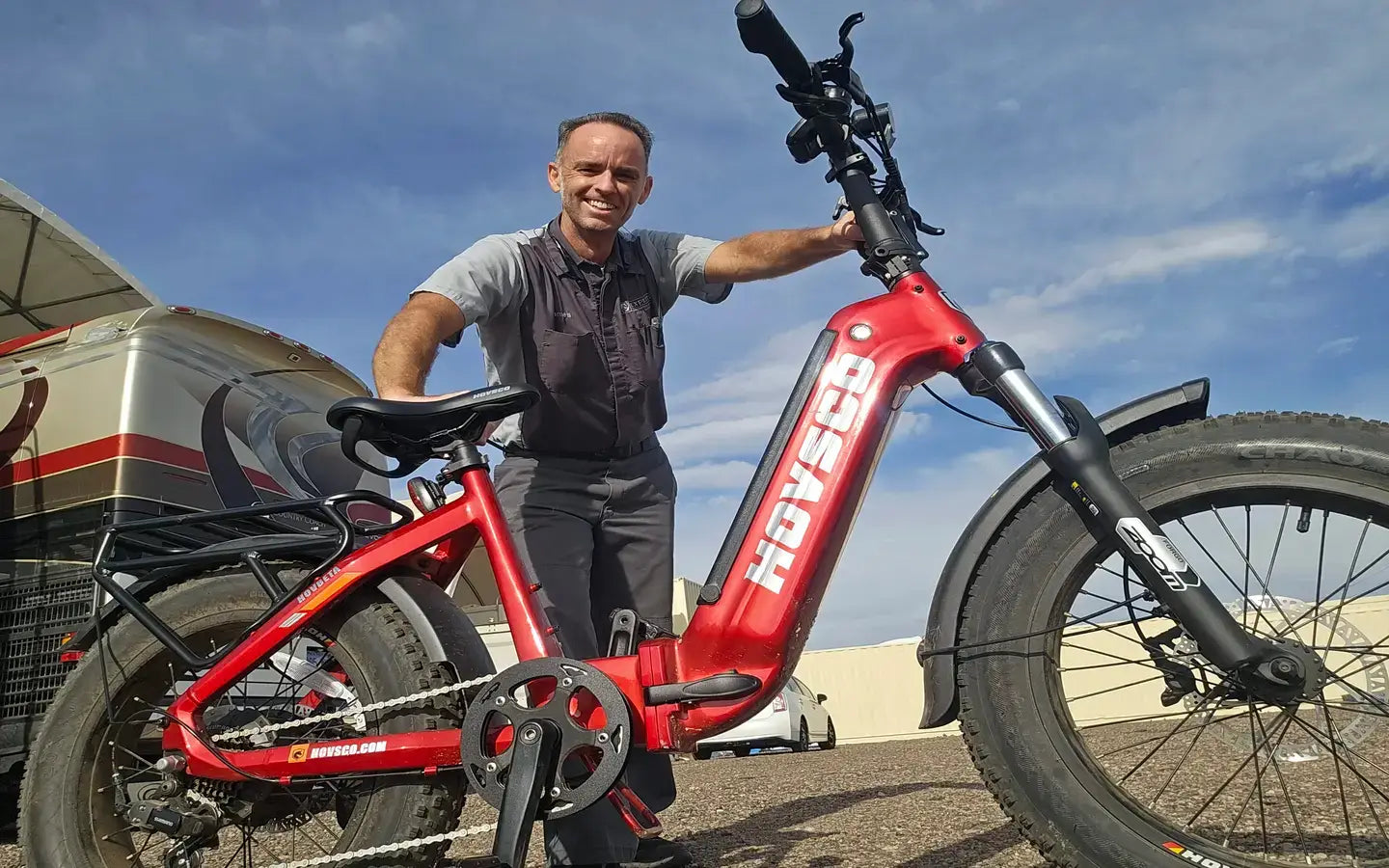
- by LiuJiazhu
What Features Should You Look For In A Full Suspension Mountain Trail Ebike?
- by LiuJiazhu
A full suspension mountain trail ebike should offer ample suspension travel, robust motor power, and durable components to handle rough terrain, steep climbs, and technical descents. Key features include front and rear suspension systems with 150-170mm travel, high-capacity batteries (500Wh+), reliable hydraulic brakes, and grippy tires for traction. These elements ensure comfort, control, and performance on demanding trails.
Full suspension mountain trail ebikes feature both front and rear suspension, typically providing 150mm to 170mm of travel, which absorbs shocks from rough terrain and technical obstacles. This dual suspension setup improves traction and rider comfort by keeping both wheels grounded, crucial for handling steep drops and jagged rocks common on mountain trails. Adjustable air shocks and forks allow customization to rider weight and trail difficulty, enhancing control and reducing fatigue.
| Trail Type | Key Features | Ideal Suspension Travel (mm) |
|---|---|---|
| Moderate (Blue) | Rolling terrain, small roots | 120-140 |
| Technical (Black) | Rocky descents, steep drops | 150-170 |
Powerful motors, such as Bosch Performance CX or Shimano EP8, paired with high-capacity batteries (500Wh to 750Wh), provide the torque and range needed for steep climbs and long rides on challenging trails. A robust motor ensures smooth pedal assistance and maintains speed on technical sections, while a larger battery supports extended exploration without frequent recharging. Efficient integration of motor and battery also contributes to balanced weight distribution and bike stability.
Full suspension mountain trail ebikes often use a combination of 29-inch front wheels for rollover ability and 27.5-inch rear wheels for agility, known as a mullet setup. Tire widths between 2.6 to 2.8 inches with aggressive tread patterns increase grip on loose or steep surfaces. This configuration balances stability and maneuverability, allowing riders to confidently tackle rock gardens, root networks, and steep descents.
Hydraulic disc brakes with four-piston calipers and large rotors (220mm front, 200mm rear) are standard on top full suspension mountain trail ebikes. These brakes provide powerful, consistent stopping power essential for controlling speed on technical descents and steep terrain. Reliable braking enhances rider safety and confidence, especially when navigating unpredictable trail conditions.
Full suspension mountain trail ebikes feature slacker head angles and shorter chainstays compared to traditional mountain bikes, improving stability at high speeds and agility on tight corners. The geometry is designed to accommodate the extra weight of the motor and battery while maintaining responsive handling. A well-balanced frame geometry helps riders maintain control on technical trails and reduces fatigue during long rides.
Comfort-enhancing features include adjustable suspension settings, dropper seat posts for quick saddle height changes, and ergonomic grips. Integrated lighting systems, mudguards, and rear racks add everyday usability and safety for trail and urban riding. Quality componentry such as weatherproof wiring and robust frame materials ensure durability and reliability under harsh trail conditions.
Full suspension ebikes outperform hardtails on technical mountain trails by absorbing impacts from both wheels, improving traction and reducing rider fatigue. While heavier, full suspension models offer superior control on rock gardens, steep descents, and root-covered paths. Hardtails are lighter and more efficient on smoother terrain but lack the shock absorption needed for demanding trails. Adjustable suspension lockouts on full suspension bikes allow riders to optimize performance for mixed terrain.
When purchasing a full suspension mountain trail ebike, prioritize models with at least 150mm suspension travel and a powerful, reliable motor such as Bosch or Shimano. Ensure the battery capacity supports your typical ride length, ideally 500Wh or more. Look for hydraulic disc brakes with large rotors for safety and control. Consider tire size and tread suited for your local trails, and check frame geometry for a balance of stability and agility. Additional features like adjustable suspension, dropper posts, and integrated lighting enhance comfort and versatility. Brands like HOVSCO offer innovative designs combining these features with safety and performance, making them a strong choice for trail enthusiasts.
“HOVSCO’s full suspension mountain trail ebikes exemplify the perfect fusion of power, control, and rider comfort. Their attention to suspension tuning and motor integration ensures that riders can confidently tackle the most technical trails without sacrificing efficiency or safety. The brand’s commitment to innovation and rider-centric design makes their ebikes ideal for both seasoned trail riders and those seeking to elevate their off-road experience.” – HOVSCO Product Specialist
What suspension travel is best for technical mountain trails?
150mm to 170mm of suspension travel is ideal for absorbing impacts and maintaining control on technical, rocky, and steep trails.
Are full suspension ebikes heavier than hardtails?
Yes, full suspension ebikes are generally heavier due to the dual suspension system and motor but offer superior comfort and control on rough terrain.
How important is battery capacity in a full suspension mountain trail ebike?
Battery capacity is crucial for longer rides and steep climbs; 500Wh or higher is recommended to ensure sufficient range.
Can I adjust the suspension on a full suspension ebike?
Most full suspension mountain trail ebikes feature adjustable air shocks and forks, allowing riders to customize settings for weight and trail conditions.
What tire setup is common on full suspension mountain trail ebikes?
A mullet setup with a 29-inch front wheel and 27.5-inch rear wheel, combined with wide tires (2.6-2.8 inches), balances rollover ability and agility.
Share:
Why Choose Affordable Full Suspension Electric Dirt Bikes?
What Are The Benefits Of Full Suspension Mountain Trail Ebikes?